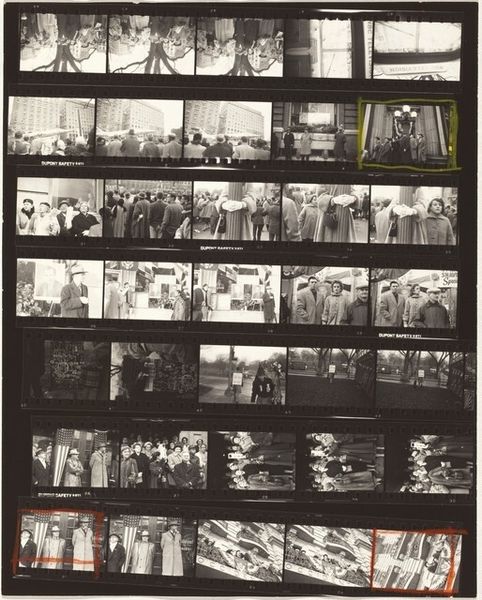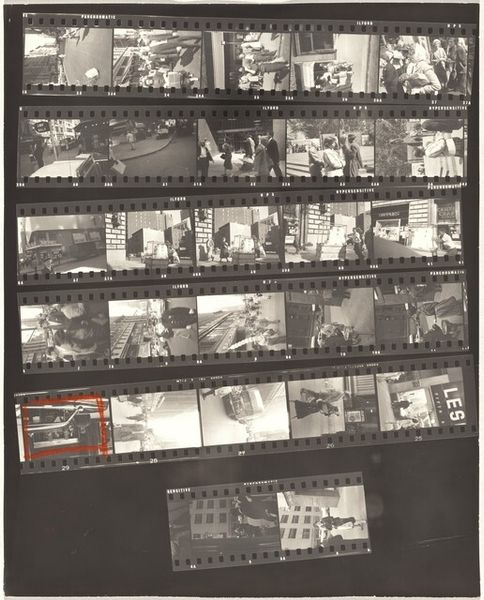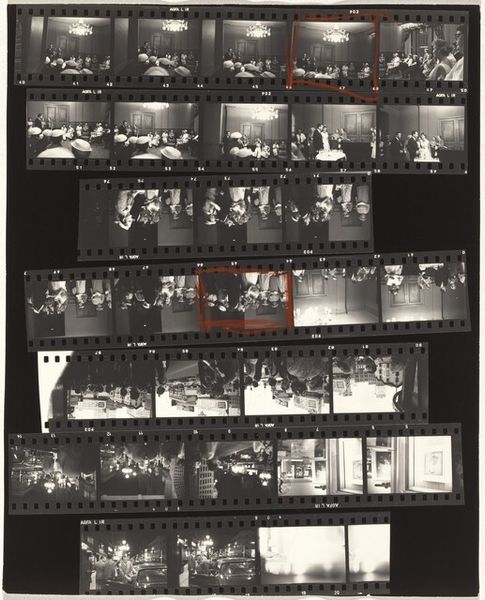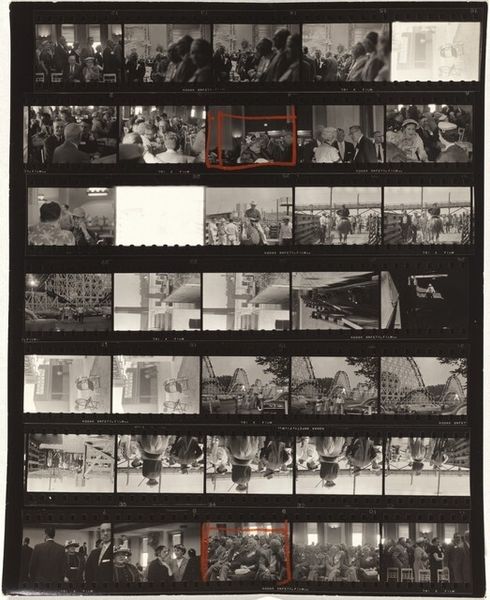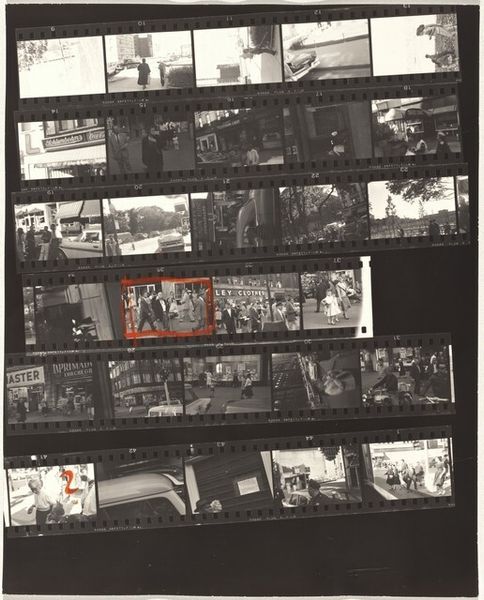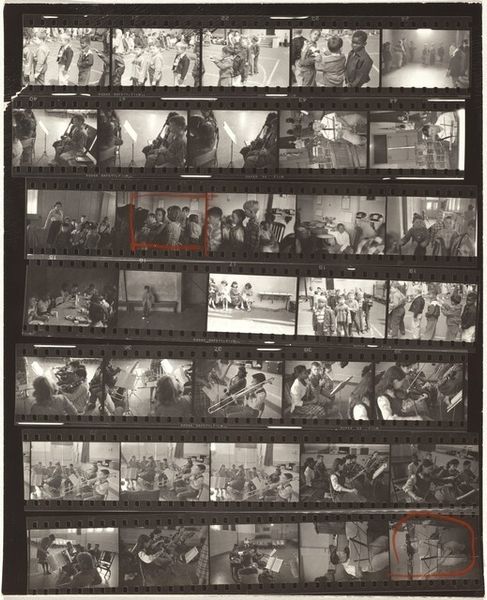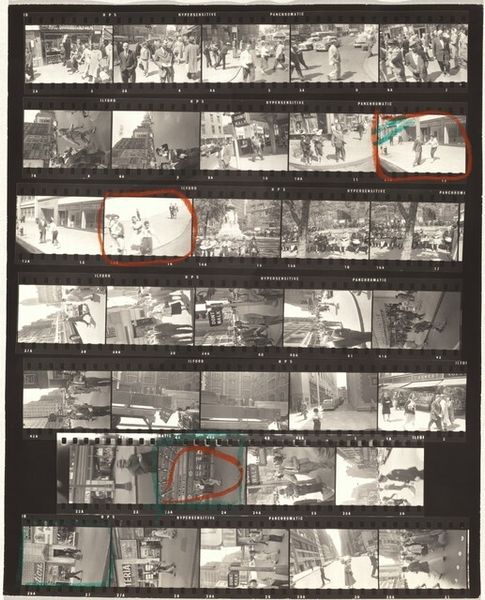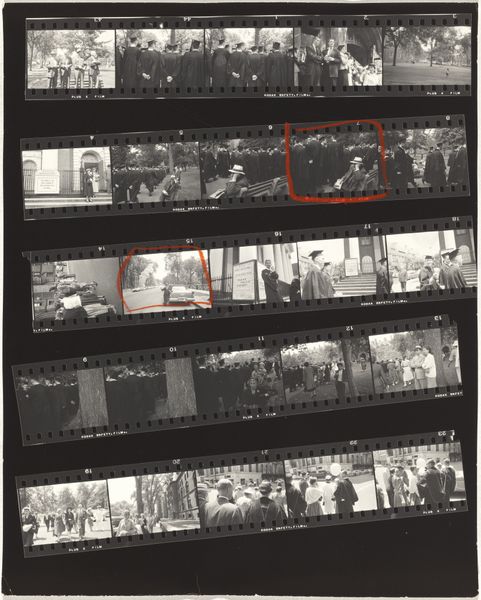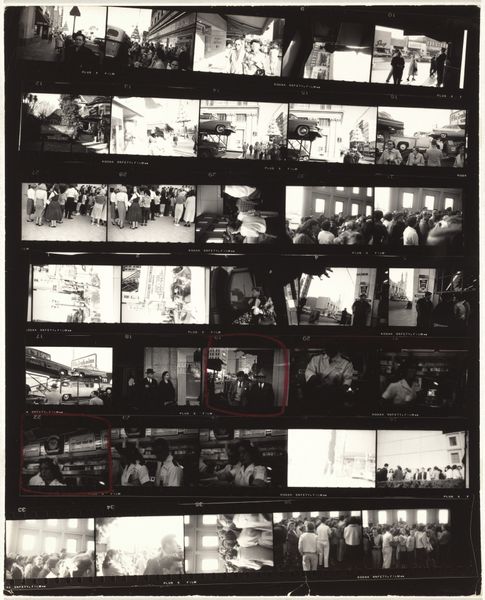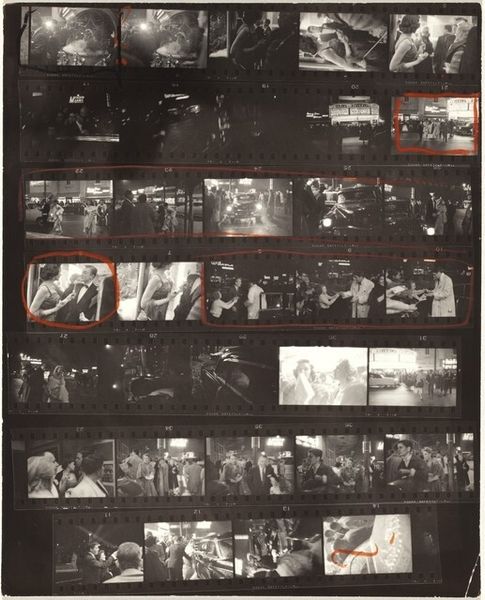
Dimensions: overall: 25.2 x 20.2 cm (9 15/16 x 7 15/16 in.)
Copyright: National Gallery of Art: CC0 1.0
Curator: This is Robert Frank's contact sheet, "Guggenheim 710--Casper, Wyoming," from 1956. It's quite raw. What are your immediate impressions? Editor: My first reaction is to the rhythmic arrangement of the individual frames—they create a fascinating pattern across the entire sheet, enhanced by the contrast between the dark film strips and brighter photographic images. Curator: Precisely. The format itself informs the content. You see how Frank presents a constellation of interconnected moments, none emphasized over others, even when clearly outlined by a red square? What can we infer about this decision-making process? Editor: Frank seems to emphasize a subjective journey, a mosaic of ordinary life reflecting mid-century American society through social gatherings, and solitary introspection, which might hint at underlying anxieties. We also notice several bridal-themed elements across many frames, suggesting potential symbolism or narrative implications worth exploring. Curator: Notice also his specific focus and perspective shifts between close-ups and wider contexts? These contrasting compositional choices point to an investigation into relationships among individuals while emphasizing moments where solitary reflection also occurred throughout. Editor: And looking at it through a historical lens, one might examine how this method departs dramatically from typical editorial photography during that period. It mirrors larger social conversations taking place at that time with traditional narratives about nationalism, consumerism, and Cold War idealism under examination. Curator: Agreed. Structurally, it operates on layering as both process and end product. Frank challenges visual hierarchy through consistent arrangement and juxtapositions allowing thematic interplay beyond traditional pictorial storytelling. Editor: Considering societal influence on aesthetic expressions reveals that this work is part critique against idealized realities perpetuated within postwar Americana. Its aesthetic choices contribute significant dialogues on broader sociopolitical dynamics that continue into modern discussions about objectivity versus subjectivity especially through art form like film. Curator: I’d add this layered presentation embodies philosophical explorations challenging preconceived constructs while raising pertinent queries to interpretation boundaries! Its legacy stems not from clarity, however stimulating engagement toward ambiguity’s acceptance. Editor: Yes! The film invites contemplation on constructed identities challenging what were, or ever will become, recognized or established historical truths during uncertain ages. That exploration provides continued significance today, both structurally speaking in relation also considering influence toward our personal interpretations involved…
Comments
No comments
Be the first to comment and join the conversation on the ultimate creative platform.
